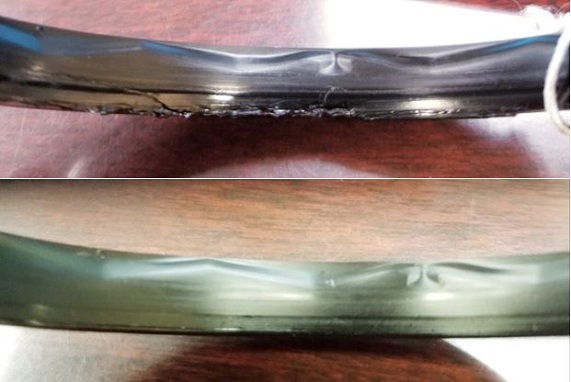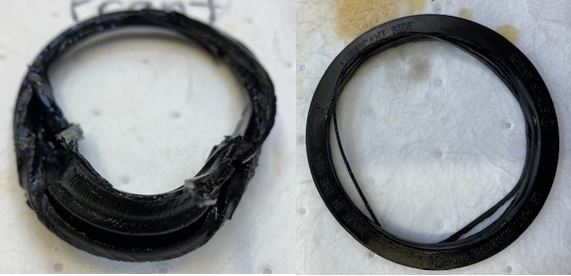We recently blogged about a new generation of pressure retaining mud motor seals. These Extra Wide mud motor seals are designed to operate in mud motors that incorporate larger extrusion gap clearance than what previous generation mud motor seals were designed for. This trend toward larger extrusion gap clearances is driven by the demand for shorter length mud motors. The previous generation seals are more susceptible to extrusion damage when used with a larger extrusion gap.
We tested a pair of 2.75” diameter Extra Wide Hybrid Seals™ at 480 RPM (345.6 sfpm) with an ISO 320 viscosity grade lubricant that was maintained at 302°F (150°C). The seals were installed in a seal carrier with a 0.020” radial extrusion gap, and the shaft had an intentional 0.010” runout. For comparison, we tested a pair of 2.75” diameter 507 series mud motor seals at the same conditions.
The Extra Wide Hybrid Seals ran for the planned 24 hours at 1,500 psi and 24 hours at 1,000 psi, and then the test was stopped and disassembled for inspection. The 507 series seals only lasted about an hour at 1,500 psi before one of the seals failed due to gross extrusion damage. The tested seals are shown in Figures 1 and 2. Although the Extra Wide Seals are not in perfect condition after this extreme test, they performed significantly better than the 507 series seals.
The new generation seal has much more pressure capacity than existing mud motor seals. Contact us to learn how the Extra Wide Hybrid Seal™ will lead to longer and more reliable mud motor life.


